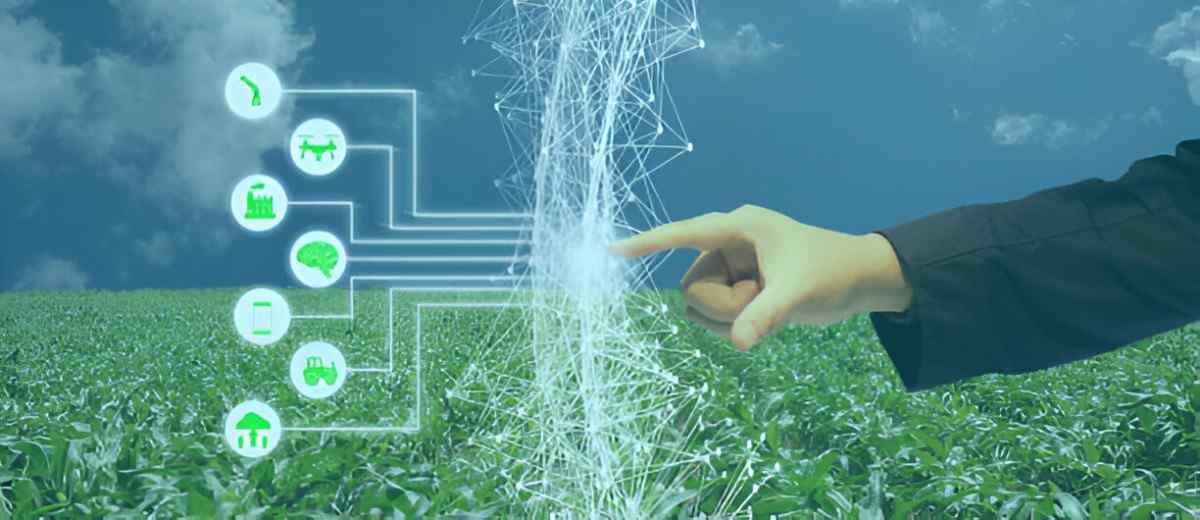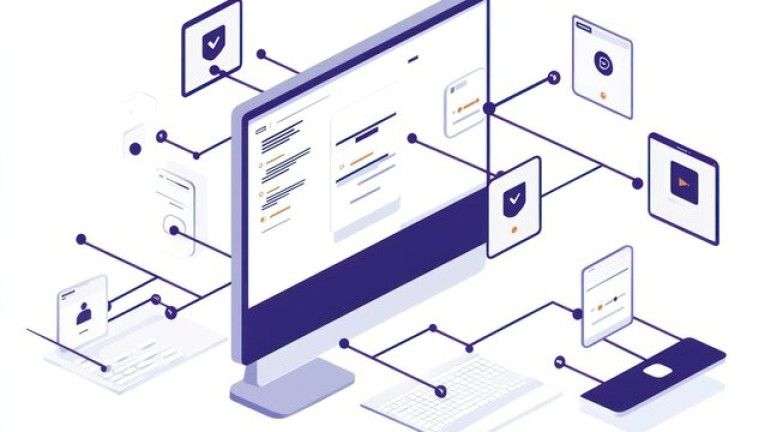Agriculture has always been a vital part of human civilization, sustaining populations and driving economies worldwide. Yet, it faces numerous challenges, from inefficiencies in supply chains to issues around sustainability and traceability. As the global population grows and demand for food increases, the agricultural sector must adapt, and emerging technologies are stepping in to help.
One of the most exciting and transformative innovations in agriculture today is the integration of blockchain technology. In this article, I will delve into the growing role of agritech blockchain and explore how this fusion of agriculture and blockchain is shaping the future of farming. Through examples, comparisons, and calculations, I’ll walk you through the concepts, benefits, challenges, and real-world applications of this cutting-edge development.
Table of Contents
What is Agritech Blockchain?
Agritech refers to the use of technology to improve the efficiency and sustainability of agricultural processes, ranging from farming techniques to supply chain management. Blockchain, on the other hand, is a distributed ledger technology that allows for secure, transparent, and tamper-proof record-keeping. When these two fields combine, the result is agritech blockchain—a powerful tool that can bring transparency, security, and efficiency to the agricultural industry.
In simple terms, agritech blockchain allows stakeholders—from farmers to consumers—to track the journey of agricultural products in a secure and transparent way. By leveraging blockchain’s immutable nature, we can reduce fraud, improve traceability, and create a more efficient supply chain, all of which benefit farmers, consumers, and the environment alike.
Why is Agritech Blockchain Important?
I believe that the agricultural sector stands to gain enormously from blockchain technology. Here are a few key reasons why agritech blockchain is so important:
1. Supply Chain Transparency
One of the most pressing issues in agriculture is supply chain transparency. Consumers and regulators increasingly want to know where their food comes from, how it was grown, and whether it was produced sustainably. Blockchain can provide a transparent and tamper-proof record of every step in the supply chain, from planting to harvest, processing, packaging, and distribution. This transparency ensures that each product is traceable, and stakeholders can trust that the food is safe and ethically produced.
2. Reducing Fraud and Counterfeiting
Food fraud and counterfeiting have been growing concerns, especially with high-value products like organic food, seafood, and pharmaceuticals. Blockchain’s immutable ledger helps prevent these issues by offering a digital fingerprint for every transaction. With blockchain, each transaction is recorded and cannot be altered, which helps ensure the authenticity of the products being traded.
3. Smart Contracts
Smart contracts, powered by blockchain, enable automatic execution of contractual terms once predefined conditions are met. For instance, a farmer could set up a smart contract with a buyer that automatically releases payment once the product is delivered and verified. This removes intermediaries and speeds up the entire transaction process, reducing costs and improving efficiency.
4. Better Data Management and Sharing
The vast amount of data generated by modern farming can be overwhelming. Blockchain offers a decentralized and secure way to store and share data between farmers, suppliers, and other stakeholders. By having access to reliable data, farmers can make more informed decisions about planting, harvesting, and selling crops.
5. Fighting Climate Change
Agriculture is one of the biggest contributors to climate change, primarily through deforestation, excessive water use, and the release of greenhouse gases. Agritech blockchain can help address these challenges by offering a platform for farmers to monitor and manage their environmental impact. Blockchain could allow for the tracking of carbon credits, providing incentives for farmers to adopt more sustainable practices.
Key Components of Agritech Blockchain
To understand how agritech blockchain works, it’s important to break it down into its key components. Let me walk you through the primary elements that make this technology so powerful:
1. Decentralized Ledger
Blockchain’s decentralized nature means that no single entity has control over the entire network. This leads to greater transparency and security, as every participant has access to the same information and cannot alter past transactions. In agriculture, this means that every step of the food production process, from seed planting to delivery, can be recorded and shared among stakeholders in real time.
2. Smart Contracts
Smart contracts are self-executing contracts with the terms directly written into code. They automate the execution of contracts, removing the need for intermediaries. In the agricultural sector, smart contracts can be used to automatically settle payments, release insurance claims, or trigger other actions when certain conditions are met, such as crop delivery or quality verification.
3. Tokenization
Tokenization refers to the process of converting real-world assets into digital tokens on a blockchain. In agritech, tokenization can be used for a variety of purposes, such as representing shares in a farm, securing ownership rights to agricultural land, or even trading carbon credits. This enables easier access to financing for farmers and creates new revenue opportunities.
4. Internet of Things (IoT) Integration
IoT devices, such as sensors and drones, can collect valuable data on farm operations. When this data is recorded on a blockchain, it becomes tamper-proof and available for all stakeholders to access. For example, a farmer could use IoT sensors to monitor soil moisture levels, and the data could automatically be logged onto a blockchain, ensuring that it is accurate and verifiable.
Real-World Applications of Agritech Blockchain
To make things clearer, let me highlight some real-world examples of how agritech blockchain is being used in agriculture:
1. Provenance Tracking
One of the most exciting applications of agritech blockchain is provenance tracking. Companies like IBM’s Food Trust Network are using blockchain to trace food from farm to table. For example, if you purchase a piece of organic beef, the blockchain allows you to trace its journey from the farm where it was raised to the store where it was sold. This increases consumer confidence and helps ensure that food is sourced responsibly.
2. Fair Trade Certification
Fair trade certification is another area where blockchain is making a difference. Traditionally, fair trade certification has involved a lot of manual processes and paperwork. By using blockchain, the certification process can be streamlined, and the entire journey of the product can be recorded on a transparent ledger. This reduces the risk of fraud and ensures that farmers are paid fairly for their products.
3. Insurance and Risk Management
Agriculture is highly vulnerable to risks such as extreme weather, pests, and diseases. Blockchain-based insurance platforms can automate the process of paying out claims, reducing administrative costs and speeding up the process. For example, if a farmer experiences crop loss due to a drought, the blockchain could trigger an automatic payment based on pre-defined criteria.
4. Supply Chain Optimization
Blockchain can also optimize the agricultural supply chain. By providing real-time data on inventory, shipments, and demand, blockchain helps reduce delays, minimize waste, and ensure that products reach consumers more quickly. This is particularly important in the context of perishable goods, such as fruits and vegetables.
Challenges of Agritech Blockchain
Despite the promising potential of agritech blockchain, it’s important to recognize that there are challenges to its widespread adoption. Here are a few hurdles:
1. High Initial Costs
Implementing blockchain technology in agriculture can be expensive. Farmers, especially small-scale ones, may struggle with the initial investment in hardware, software, and training. Moreover, the costs associated with maintaining and upgrading the system could be prohibitive for some.
2. Scalability Issues
While blockchain offers immense benefits, scalability remains an issue. As the volume of transactions grows, blockchain networks can become slower and less efficient. Agritech blockchain platforms need to find ways to scale their solutions to accommodate the massive amount of data generated by the agricultural sector.
3. Regulatory Uncertainty
The regulatory landscape surrounding blockchain is still evolving. Governments around the world are grappling with how to regulate blockchain technology, especially in industries like agriculture. Unclear regulations can create uncertainty and slow down the adoption of blockchain in agriculture.
Future of Agritech Blockchain
As I look toward the future, I see a world where agritech blockchain is fully integrated into every aspect of agriculture. I envision farmers using blockchain to track their crops, manage supply chains, access financing, and ensure sustainability. With the continued development of blockchain technology and its integration with other technologies like IoT and artificial intelligence, the future of agritech is undoubtedly bright.
Conclusion
Agritech blockchain is poised to revolutionize the agricultural sector, providing solutions to long-standing challenges like supply chain transparency, fraud, and inefficiency. By combining the power of blockchain with the potential of agricultural technology, we can create a more sustainable, transparent, and efficient food system. However, widespread adoption will require overcoming challenges such as high costs and scalability issues. As the technology matures, I am confident that agritech blockchain will play a key role in shaping the future of farming.





